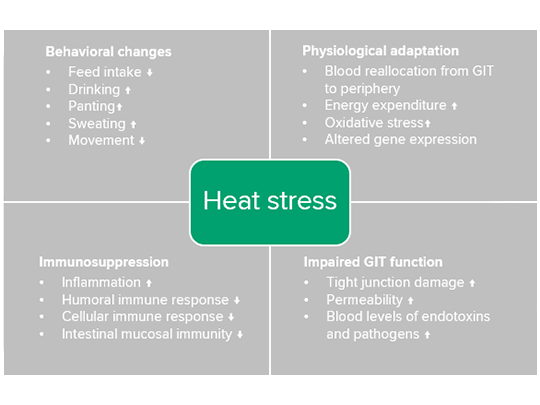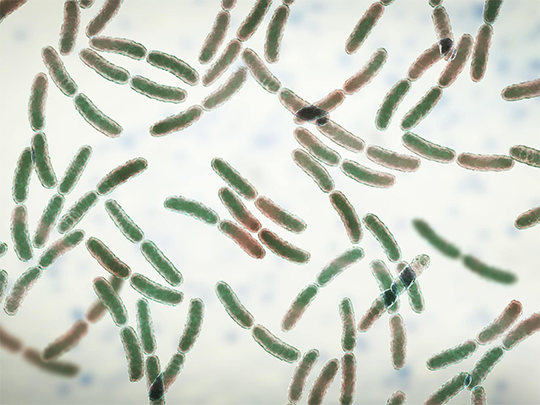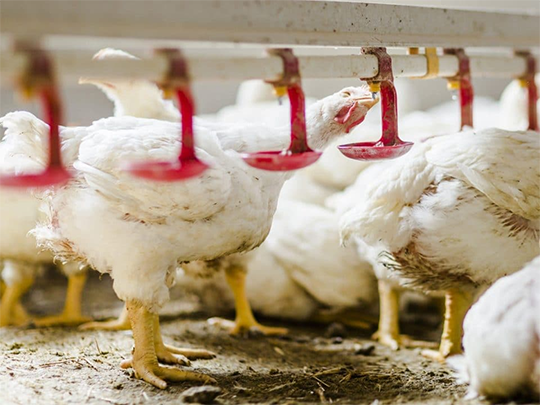What is the effect of heat stress in monogastrics (part 5)?
Did you know that heat stress can be divided into two main categories: Acute and chronic heat stress? Persistent heat stress in monogastric animals not only has negative effects on intestinal morphology, barrier integrity or the immune system. The intestinal microbiota is also negatively affected. Read more in this article.
Consumer demand for food of animal origin is increasing, especially in emerging markets. But especially in emerging countries with hot climates, heat stress is one of the main causes of economic losses in animal production.
Not only can hot climates deteriorate feed quality, they often also reduce the reproductive performance and productivity of farm animals – not to mention the impact on overall health. Furthermore, farm animals under heat stress are more susceptible to infectious diseases. Furthermore, new pathogens or vectors can be introduced into areas with changing climates. Lean in this article, how heat stress can affect intestinal microbiota.
Discover the effects of heat stress in monogastrics in our heat stress series:
Did you know?
Heat stress can be divided into two main categories: Acute and chronic heat stress. Acute heat stress occurs when there is a short and rapid rise in the ambient temperature. Chronic heat stress, on the other hand, occurs when high temperatures persist over a long period of time – usually several days

Persistent heat stress in monogastric animals not only has negative effects on intestinal morphology, barrier integrity or the immune system. The intestinal microbiota is also negatively affected:
Heat stress has been shown to affect the composition of the intestinal microbiota in several recent studies. In Holstein heifers for example, an increase of environmental temperature from 20°C to 33°C induced significant changes to the major phylogenetic groups in the rumen, accompanied by a reduction of short-chain fatty acid (SCFA) production (Tajima et al., 2017). These changes could be related to the reduced dry matter intake of the animals under heat stress.

Changes in SCFA production due to heat stress have also been observed in pigs. Although in this study, overall SCFA production was not reduced. However, the proportion of the different SCFAs was altered to a higher percentage of acetate and a lower abundance of propionate (Song et al., 2011). A change in the proportion of produced SCFA might reflect both a shift in the metabolic activity of bacteria and/ or a changed composition of the intestinal microbiota.

It has also been shown that heat stress directly alters the intestinal microbial diversity. In this context, Burkholder et al. (2008) observed a reduced ileal microbial diversity in broilers kept at 30°C compared to broilers kept at 23°C.
Another study with poultry showed the context between heat stress and changes in some bacterial groups in more detail: Cyclic heat stress decreased the counts of Lactobacilli and Bifido bacteria in the small intestine, whereas time counts of coliforms and Clostridium increased (Song et al., 2014). This might reflect an unfavourable change, since numerous members of the lactobacilli- and bifidobacterial families are considered as advantageous for the host.
Although most coliforms and clostridia are commensal members of the gut microbiota, some of them are associated with proteolytic fermentation, and contain a range of potential pathogenic members (e.g. C. perfringens, Salmonella or endotoxin producing E. coli). Consequently, increased counts of these bacterial groups might result in increased production of potentially harmful fermentation products and proliferation of potential pathogens.
Let’s summarize the insights from the heat stress series:
- Heat stress has multiple etiological factors causing physiological, behavioural and metabolic changes.
- Heat stress has substantial effects on the immune system, causing suppression of immunity and reduction of the ability to resist pathogen invasion.
- Heat stress reduces the intestinal absorption surface (villi height), resulting in lower nutrient utilisation and higher substrate for fermentation.
- Heat stress severely alters signalling pathways, regulating major processes of glucose and lipid metabolism, resulting in unfavourable changes in the relation of protein and fat deposition.
- Heat stress triggers the proliferation of undesired bacteria, resulting in higher numbers of proteolytic bacteria and potential pathogenic bacteria.
- Heat stress decreases intestinal barrier integrity, resulting in the invasion of a higher number of antigens and pathogens into the bloodstream and the organism.
- Heat stress-induced changes in the organism represent a complex of the above-mentioned symptoms, resulting in a strong general impairment of animal performance and resilience

Anne Oberdorf
Anne has always been fascinated by the unknown, the diversity and beauty of nature. Her love for nature brought her to Delacon in 2018 after studying agricultural sciences, where she worked as Technical Communications Manager and later as Product Manager Aquaculture. Since February 2021, she has been taking a new, natural career path outside of Delacon.










